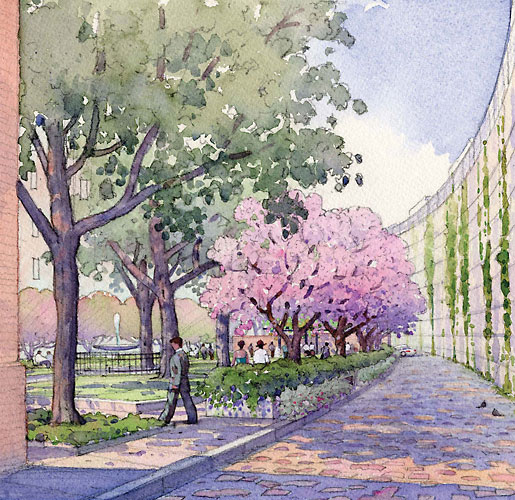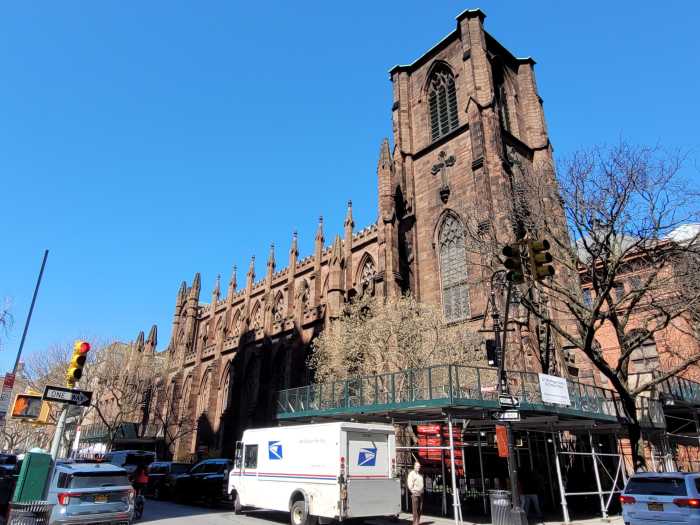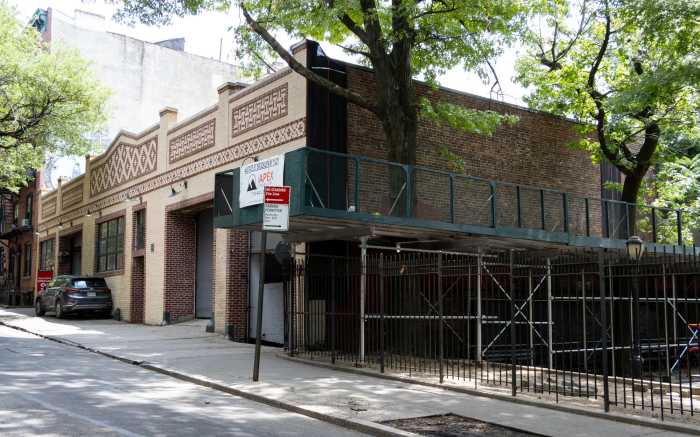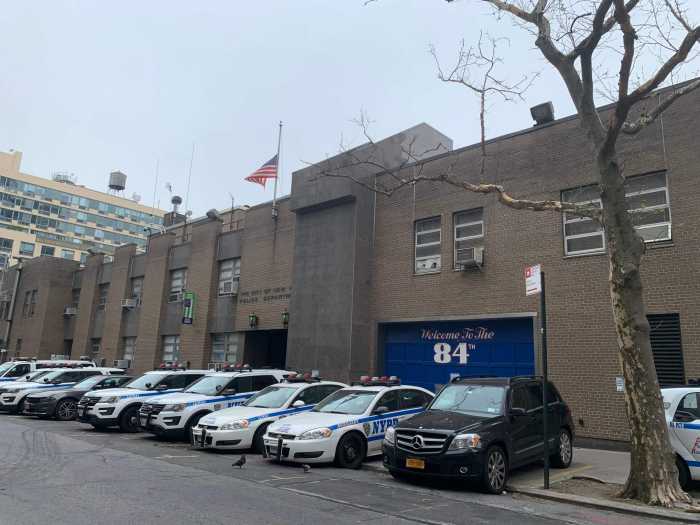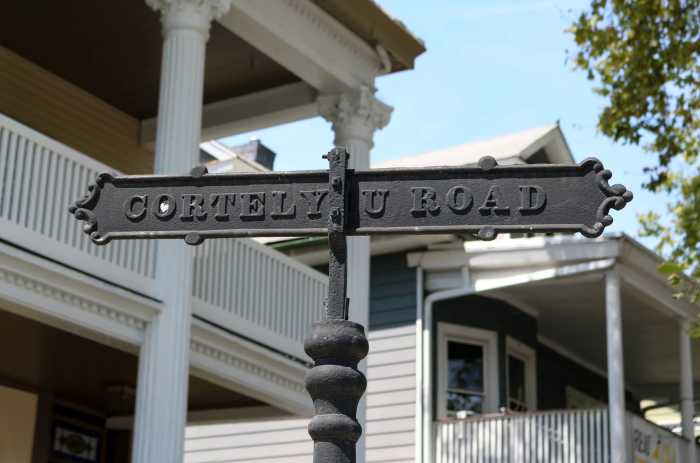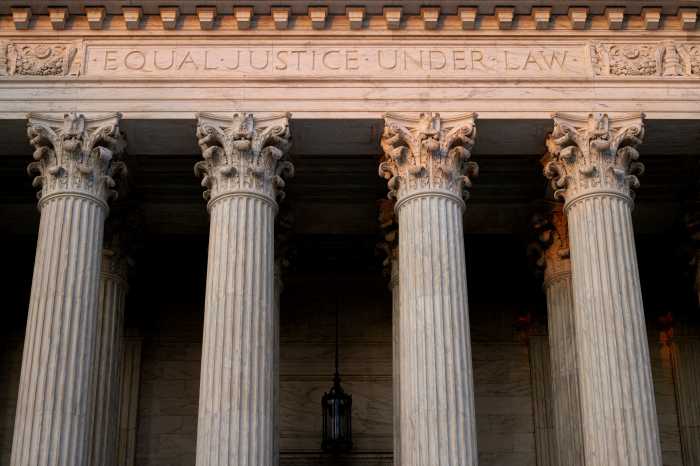The owner of a historic Brooklyn Heights apartment complex buried his own plan to put a garage in the courtyard — and the city approved it!
The Landmarks Preservation Commission voted 6–2 on Tuesday to allow Joralemon Street landlord Joel Weiner to build a 90-car, underground garage topped with a garden behind the 118-year-old Riverside houses that were built by famed philanthropist Alfred T. White.
The approval comes six months after the Commission rejected Weiner’s application to build a two-story, 134-car, above-ground garage topped with a garden. The site is sandwiched hard against the Brooklyn–Queens Expressway — across the street from the large One Brooklyn Bridge Park condos and future waterfront open space, which explains the push for more parking.
Moving the carport underground was all it took to convince the majority of Landmarks officials to approve the project, Commission spokeswoman Lisi de Bourbon said.
And tenants, who strongly opposed earlier garage proposals, will warm up to the subterranean plan, claimed former City Councilman Ken Fisher, who is representing the landlord.
“We’re going to be removing 10,000 square feet of asphalt and basically doubling the amount of green space in the courtyard with minimal intrusion from the parking,” said Fisher. “We hope that in time, residents will recognize that it will be significantly improved experience.”
So far, residents of the 157 apartments in the complex aren’t buying what their former councilman is selling.
“It’s a historic building, and it should stay the way it is,” said Bill Ringler, chair of the Riverside Tenants Association. “They say it’s going to be underground, but it can’t be completely underground. There will still be cars going around and there will still be noise and fumes.”
The plans call for creating a cobblestone entrance ramp from Joralemon Street that will run alongside the BQE retaining wall on the west side of courtyard before reaching a ramp that leads to the sunken garage. The rest of the courtyard — which is currently mostly asphalt — would be replaced with a garden. In order to build the garage, trees in the northern part of the lot would be chopped down, but arbors in the southern section would be preserved.
Residents of the complex will have first dibs on parking spaces.
That did nothing to assuage the anger of the Brooklyn Heights Association.
“It’s a devastating decision,” said Judy Stanton, the group’s executive director. “This courtyard is not intended to be a driveway. It is one of the single most important properties that we have in Brooklyn — putting a garage in it is antithetical.”


